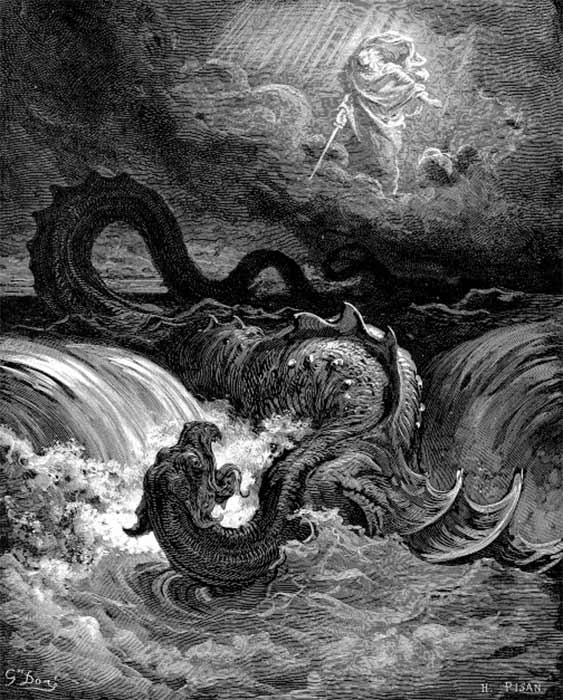The Biblical story of Jonah and the Whale uses shock and awe to install an ancient motif of mythology into the minds of children attending Sunday School. According to the Book of Jonah the Biblical prophet is attempting to avoid God’s command when a storm hits his ship. The sailors throw Jonah overboard as a human sacrifice to save themselves. Jonah is then swallowed by a great fish from which he emerges triumphant. While this is an iconic Christian tale, similarly to Christmas and many other aspects of the new prevailing religion, the story of a person being consumed by a whale is structured on the older oral traditions and rituals of tribal shamans around the world.

Perseus Freeing Andromeda by Piero di Cosimo (1510) Uffizi Collection ( Public Domain )
Overcoming Monsters In The Underworld
Ronald L. Boyer in his 2017 article The Sign of Jonah: Initiatory Symbolism in Biblical Mythopoetics, explains that in Greek myths “ heroes like Heracles, Perseus, and Jason (of the Argonauts) are all devoured by sea-monsters of various kinds from whose bellies they later escape .” Death-rebirth imagery, motifs and archetypes, including swallowing by sea-monsters is replete in folklore and fairy tales. In one of the original versions of Little Red Riding Hood , known as The Grandmother and the Werewolf , both the heroine and the grandmother are devoured by a werewolf and later cut from its belly by woodcutter, miraculously restoring them to life.
In Shamanism: Archaic Techniques of Ecstasy, (1951) author Mircea Eliade describes the existence of a composite ritual structure associated with tribal initiation, including initiation in secret societies. Based on the initiatory essence of the candidate’s ‘death’ followed by his ‘resurrection’, Eliade discovered in composite rituals “ candidates in secret tribal societies that undertook periods of solitude or isolation in the bush, representing “the beyond” in which they assimilated to the dead .” With their faces covered by funerary masks or ash, candidates symbolically descended to the Underworld where they faced difficult ordeals like being devoured by a monster or a god.

Destruction of Leviathan, depiction by Gustave Doré, (1865) ( Public Domain )
Ancient Babylonian texts recount a battle between the god Marduk and the multi-headed serpent-dragon Tiamat and a Canaanite poem from Ras Shamra (ancient Ugarit) in northern Syria records a battle between the god Baal and a monster called Leviathan.
Like this Preview and want to read on? You can! JOIN US THERE ( with easy, instant access ) and see what you’re missing!! All Premium articles are available in full, with immediate access.
For the price of a cup of coffee, you get this and all the other great benefits at Ancient Origins Premium. And – each time you support AO Premium, you support independent thought and writing.
Ashley Cowie is a Scottish historian, author and documentary filmmaker presenting original perspectives on historical problems, in accessible and exciting ways. His books, articles and television shows explore lost cultures and kingdoms, ancient crafts and artifacts, symbols and architecture, myths and legends telling thought-provoking stories which together offer insights into our shared social history . www.ashleycowie.com.
Top Image : Jonah and the Whale by Peter Lastman (1621)Museum Kunstpalast ( Public Domain )
By Ashley Cowie
 RSS Feed
RSS Feed















 October 7th, 2021
October 7th, 2021  Awake Goy
Awake Goy  Posted in
Posted in  Tags:
Tags: 













